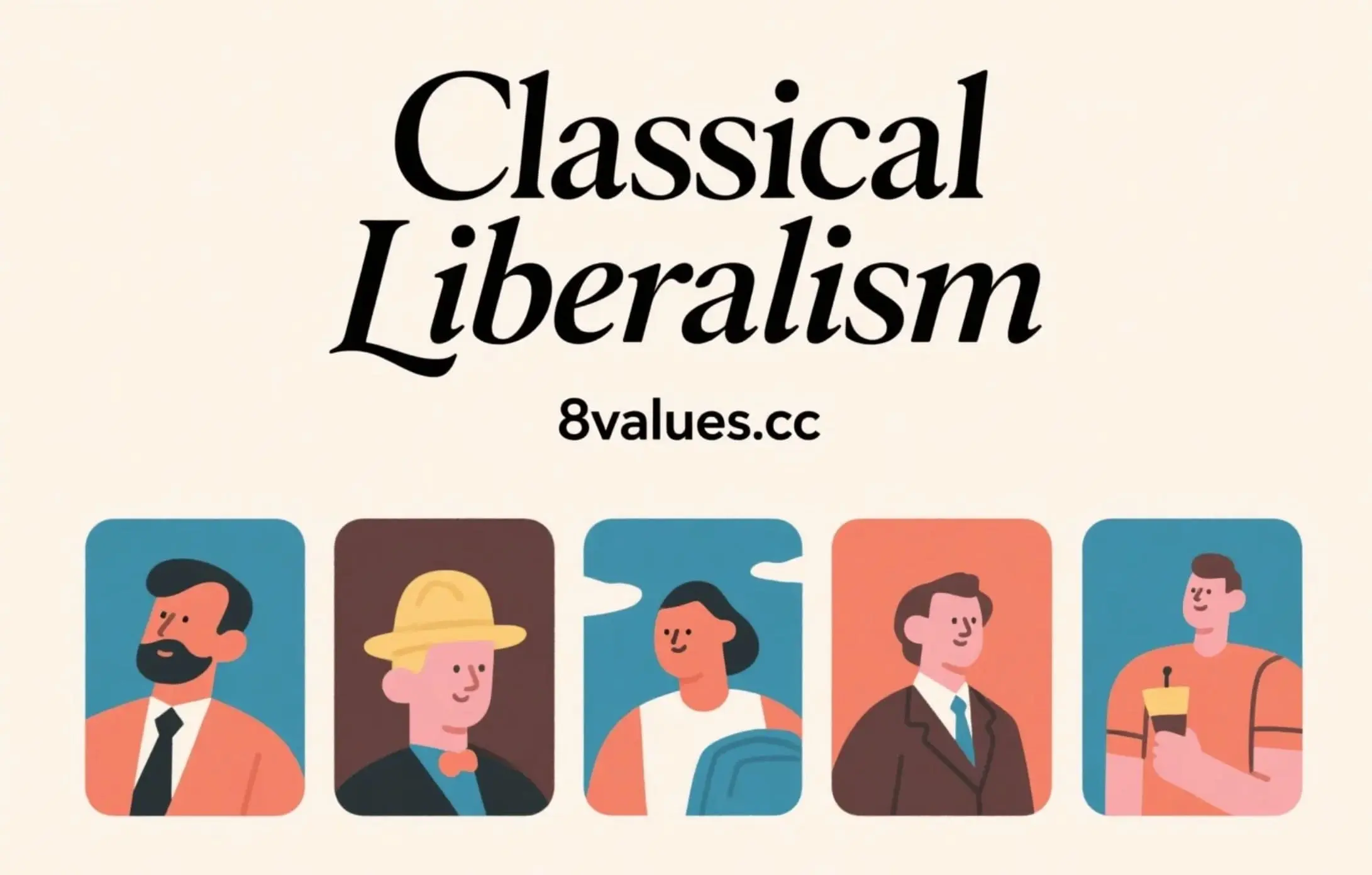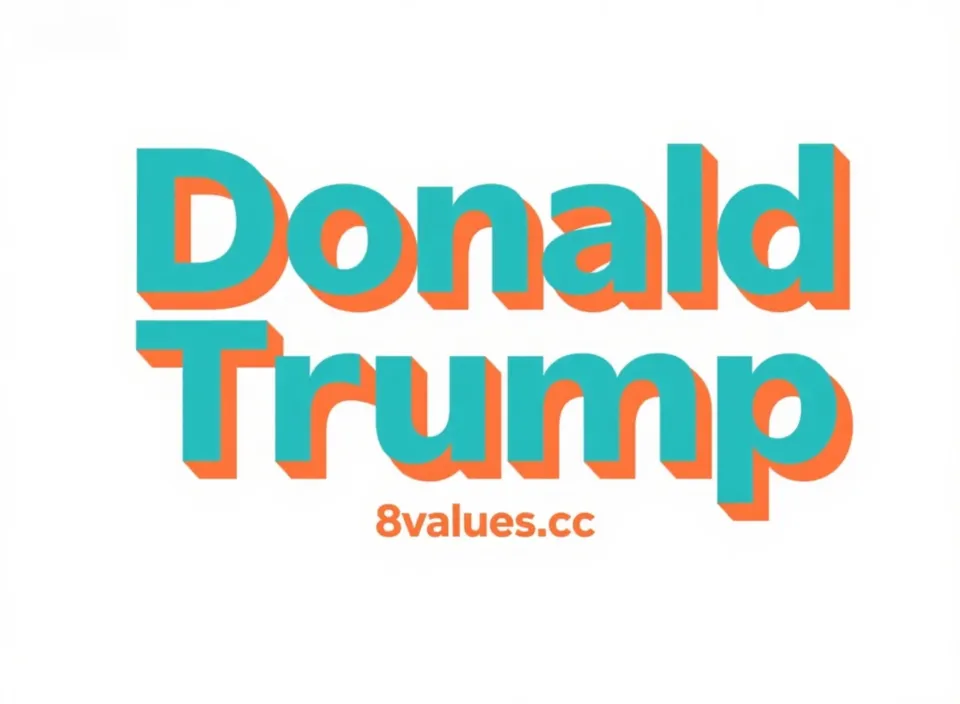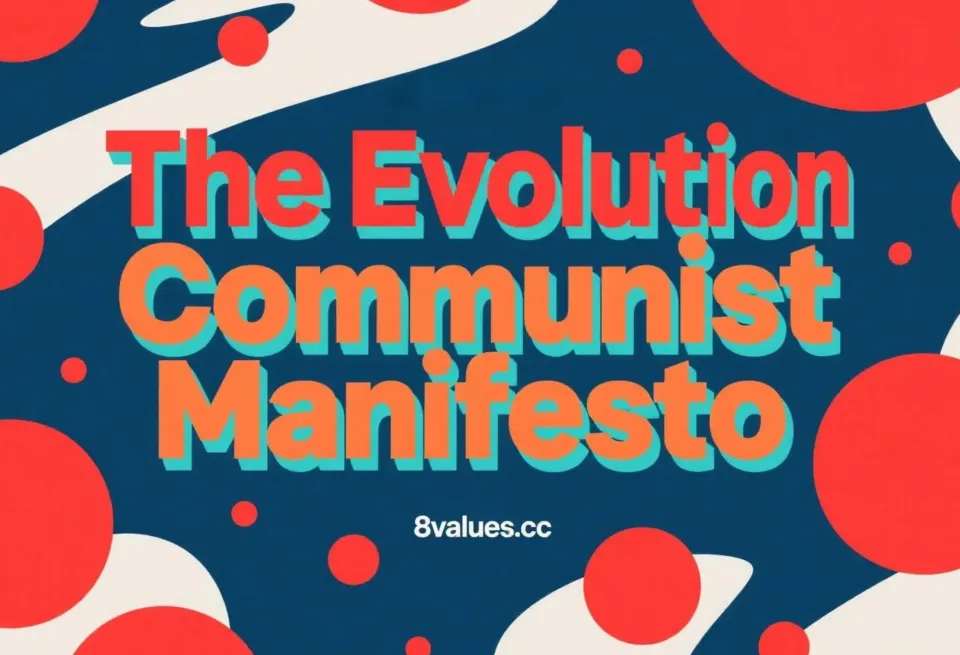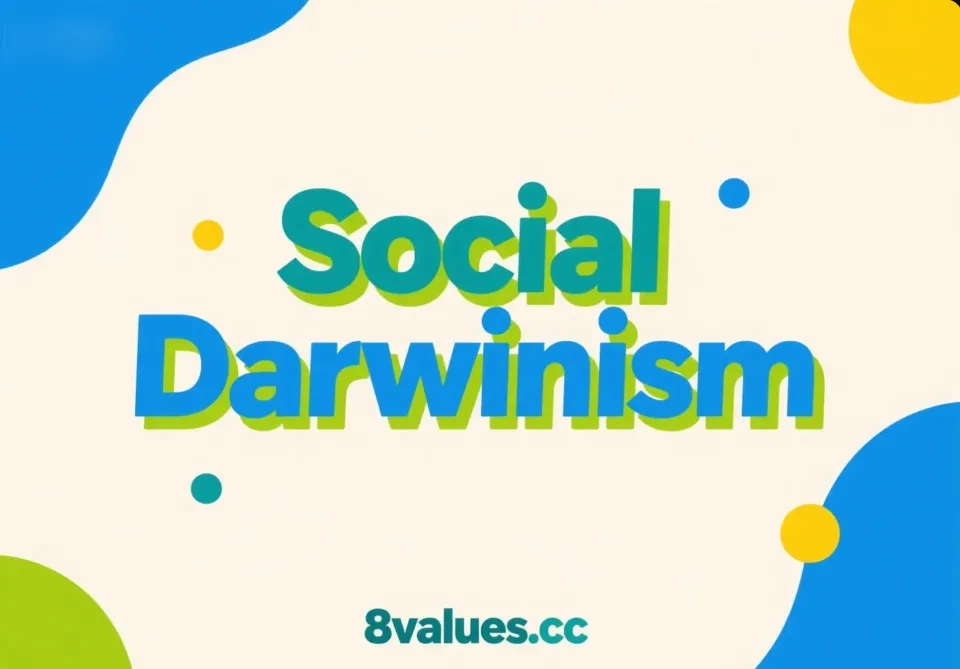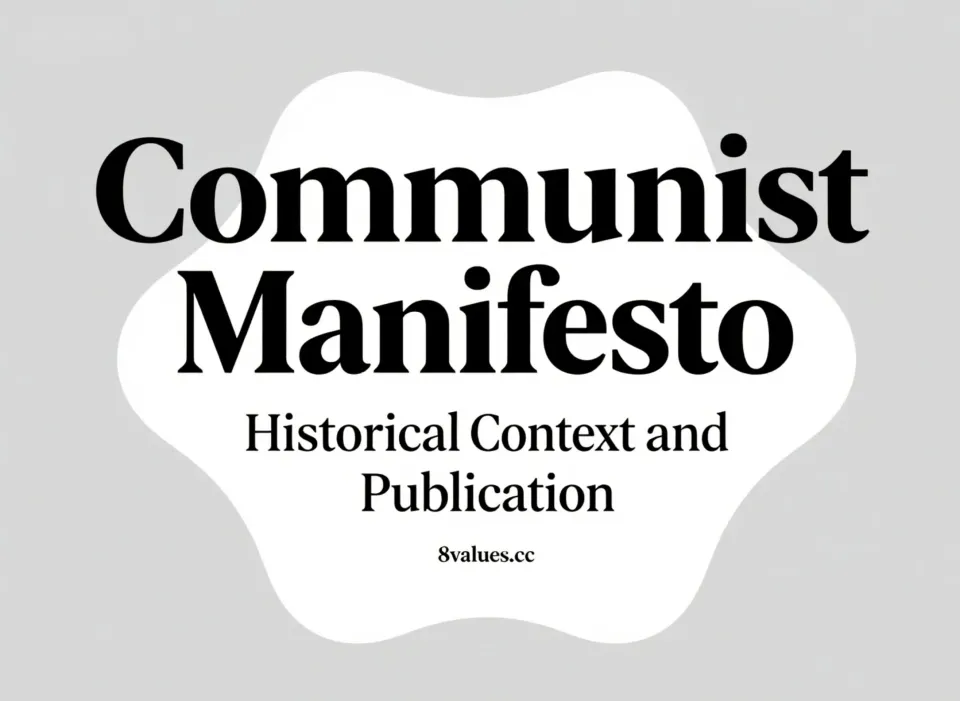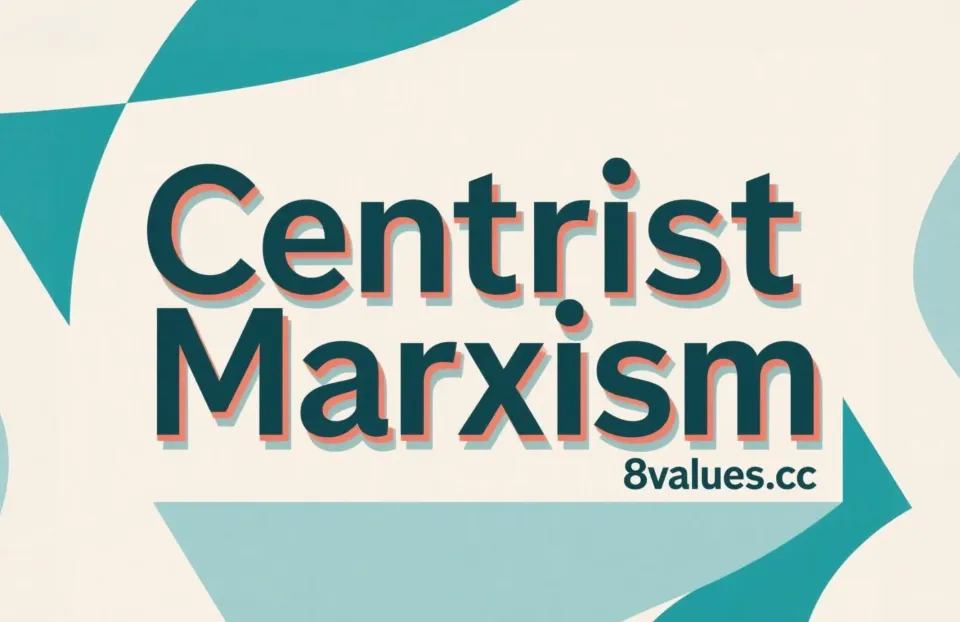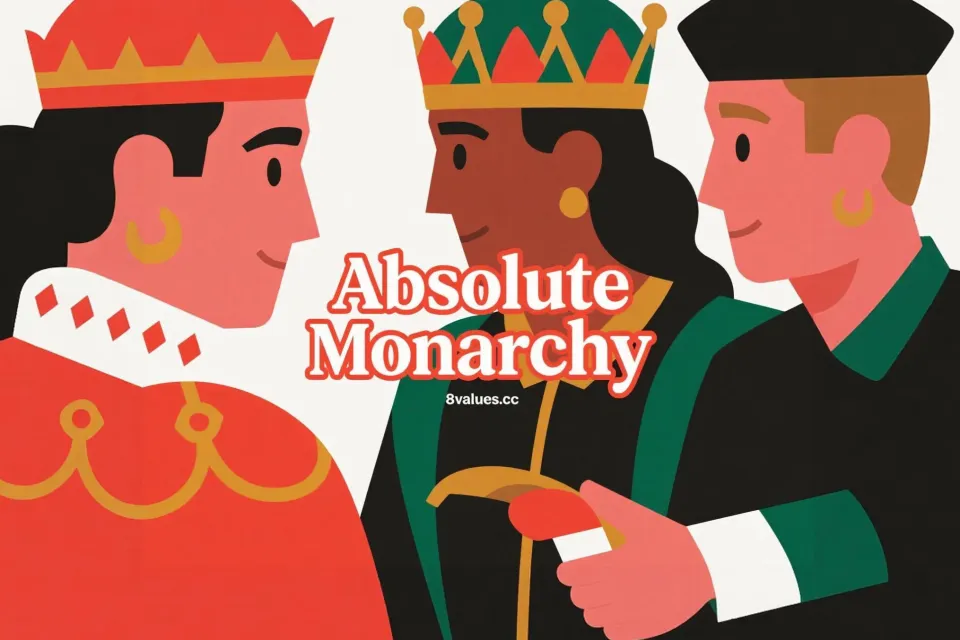Classical Liberalism | 8values Interpretation of ideological ideology in political tests
Explore the core principles, historical origins and their far-reaching impact on the modern world. This article will read in detail this political philosophy that emphasizes individual rights, laissez-faire economy and limited government, helping you understand its unique position in the 8values political test.
In the long history of Western political thought, liberalism undoubtedly plays an important role. However, it is not a single, unchanging theory, but a huge ideological system that has undergone complex evolution and has many branches. Among them, Classical liberalism, as its original form, laid the foundation for all variants of liberalism. If you get the results of "classical liberalism" in the 8values political test , or want to have a deep understanding of this basic philosophy that shapes modern society, this article will provide you with a comprehensive, professional and in-depth interpretation.
The Origin and Historical Background of Classical Liberalism: The Dawn of Western Thought
Classical liberalism originated in Western Europe in the 17th and 18th centuries and was a product of the Enlightenment , the Industrial Revolution and the subsequent capitalist system . During this period, European society was experiencing a critical moment of transformation from feudalism to capitalism, and the middle class grew stronger and they challenged the absolute autocratic power of feudal aristocrats and royal families.
The birth of classical liberalism, on the one hand, originated from the people of Western countries' demands for religious belief and freedom of speech , and on the other hand, it reflects the middle class's desire to get rid of government intervention and promote the development of industry and commerce. It opposed the early political theories such as the divine monarchy, the hereditary system and the state education system that were prevalent at that time, and emphasized individual freedom, rationality, justice and tolerance . Both the American Revolution and the French Revolution were deeply influenced by classical liberal ideas to a large extent and could be regarded as active practices of their philosophical ideas.
The discussion of early classical liberalism can be traced back to the Salamanca school in Spain in the early 16th century, as well as important figures such as Finnish parliamentarian Anders Qudenius. But what really laid the theoretical foundation for it was the "The Wealth of Nations" by Scottish philosopher Adam Smith and the "The Theory of Government" by John Locke .
The core concept of classical liberalism: the essence of personal freedom and limited government
The core principle of classical liberalism is to place individual freedoms, rights and interests above the state . It regards individuals as the transcendental subject of social existence, believing that "the state and society are the sum of all individuals, and the national interests are the sum of the legitimate interests of all their citizens."
1. Individualism
Individualism is the core principle of classical liberalism . It emphasizes the importance of the individual characteristics of human beings and opposes the restraint of any social group or group. The goal is to build a society that allows individuals to fully develop. This concept places self-realization at the core, believing that individuals can build a true society through the power of self-orientedness.
2. Negative Liberty
Classical liberalism advocates mainly negative freedom . This means that freedom is a state of no (government) coercion , i.e. “freedom from interference and coercion”. Individual rights are understood as a “negative nature”, i.e. individual freedoms that are not violated by other people (and governments). This view of freedom was mainly targeted by government interference in the Rock era, and in the Mill era, it expanded to limit the oppression of public opinion on individuals.
3. Natural Rights
Classical liberals believe that individual rights are not "created" by the government, but moral rights that exist independently of the government . Thomas Jefferson called these rights "undivisible rights", including life, freedom and the pursuit of happiness . In "On Government", John Locke systematically elaborated on the theory of natural rights, emphasizing that the purpose of government existence is to protect these inalienable rights.
4. Private Property
Ownership of personal property is regarded as the most important part of personal freedom . Classical liberalism firmly advocates the protection of private property, believing that this is the cornerstone of individual independence and autonomy. In the eyes of classical liberals, the only purpose of the law is to protect individual rights, including property rights.
5. Limited Government
Classical liberalism supports the minimum state . They believe that power is prone to corruption , so the power of the government should be strictly limited. The purpose of government exists only to protect the freedom of each individual.
Montesquieu 's concept of separation of powers , namely the separation of legislative, enforcement and judicial powers and mutual checks and balances, is a concrete manifestation of the limited nature of classical liberalism, which was later adopted by the US Constitution as the core of the political system. Government responsibilities are usually limited to the following aspects:
- Provide national defense against foreign invasions.
- Maintain legal order and protect citizens from infringement, including protecting private property and enforcing contracts.
- Public works and services such as roads, bridges, canals, postal services, stable currencies and unified weights and measures are provided by the market that cannot be effectively provided.
Classical liberals do not necessarily support pure democratic principles because they fear that the tyranny of the majority may violate personal rights and property rights. James Madison advocates republic constitutionalism to protect individual freedoms, prevent the majority from controlling public sentiment and interests, and sacrifice the minority.
The economic cornerstone of classical liberalism: free markets and the "invisible hand"
Economic liberalism is the core view of classical liberalism . Classical liberals firmly believe that laissez-faire economic policies and unregulated free markets are the best ways to promote social prosperity and personal well-being.
1. Adam Smith's "Invisible Hand"
In "The Wealth of Nations" , Adam Smith systematically elaborated on the operating principles of the free market economy and opposed the mercantilism of state intervention in the economy. He proposed that in a free market environment, supply, demand, price and competition are not regulated by the government, and that everyone's pursuit of maximizing their own interests will ultimately unconsciously promote the growth of interests and wealth of the entire society through the "invisible hand" . This gives positive social significance to the accumulation of wealth.
2. Oppose government intervention
Classical liberalism believes that government intervention in the economy often hinders economic growth and leads to inefficiency. They advocate excluding the government from the economic field, allowing the market mechanism to self-regulate, and guiding the adjustment of economic life through individual rational calculations, that is, "the government with the least management is the best government."
3. Efficiency and spontaneous order
The market is seen as a mechanism that can most efficiently allocate scarce resources. Thinkers such as Hayek further developed the "spontaneous order" theory, believing that a stable social order is not designed by humans or maintained by government power, but evolved through random events and processes that seem to be beyond human control. This order can make the knowledge scattered among individuals fully utilize and effectively disseminate and promote economic growth.
The evolution and division of classical liberalism: the flow of thought
Classical liberalism reached its peak in the mid-19th century. However, the fundamental change in the social structure brought about by the Industrial Revolution also exposed many disadvantages of laissez-faire capitalism, such as pollution, child labour, urban crowding, miserable life of the working class and widening gap between the rich and the poor . These challenges have led to profound changes in liberal thinking.
1. Going towards modern liberalism (Modern/Social Liberalism)
At the end of the 19th century, under the criticism of socialism, the idea of classical liberalism took a significant change and began to recognize the need for state intervention , especially in terms of social welfare . Social Liberalism (also known as modern liberalism or neoliberalism) that emerged during this period advocated:
- The government should actively intervene in economic and social affairs and protect citizens' material human rights through legislation prohibiting child labor, regulating minimum wages, providing social welfare, etc.
- It emphasizes positive freedom and believes that true freedom is not only free from interference, but also includes the ability to achieve self-development, which requires the government to provide education, medical care and other conditions.
- Senior liberals such as Rawls attach more importance to personal freedom and political freedom , and believe that economic freedom is defined by the social system, and the government can intervene in the market for institutional justice.
John Stuart Mill is considered a milestone in the transition from traditional liberalism to modern liberalism . In "On Freedom", he systematically expounded the view of freedom, adhered to the defense of personal freedom by classical liberalism, and at the same time tried to reconstruct personal freedom from the perspective of individual and social relations, and proposed the "principle of harm" , that is, the only legitimate reason for social intervention in personal freedom is to prevent harm to others.
2. Revived Classical Liberalism: Neo-classical Liberalism
Meanwhile, another group of economists, such as Hayek and Friedman , sought to revive and develop the view of classical liberalism in the 20th century, known as Neo-liberalism . They stressed:
- Free markets are a prerequisite for a free society , and economic freedom is an indispensable element of civil and political freedom.
- We firmly believe that a free market based on private property rights can achieve effective resource allocation through voluntary cooperation and spontaneous order .
- Criticize welfare state policy , believing that any policy attempt to bring greater economic equality is oppressive and opposes the government's redistribution through taxes.
Neoclassical liberals believe that they are the true heirs of classical liberalism.
Comparison between classical liberalism and other political thoughts: boundaries and intersections
1. Classical Liberalism and Modern/Social Liberalism
This is the main difference. Classical liberalism adheres to negative freedom , that is, the freedom to individuals are free from interference, and completely opposes government policies such as welfare states to interfere in the economy. Modern/social liberalism advocates positive rights , believing that individuals have the right to certain benefits or services (such as education, medical care, minimum wage), and therefore supports the government in protecting these rights and achieving social equity through legislation and taxation.
In the United States, the meaning of the word "liberalism" changed after the Roosevelt's New Deal, which was completely different from the classical liberalism of the 18th and 19th centuries. Hayek even believed that the concept of "neoliberalism" expounded by Hobhouse should be called "socialism" because it is too different from classical liberalism.
2. Classical libertarianism and libertarianism
Libertarians usually believe that the words "classical liberalism" and "libertarianism" can be interchanged. The two do have many similarities in philosophy, politics and economy, and both advocate laissez-faire government, free market and personal freedom . Classical liberalism has always advocated restricting government power to protect individual freedom, while liberalist parties have further advocated more restrictions on government power.
However, there are differences between the two. Some scholars believe that classical liberalism refuses to place freedom above order and does not show hostility to the state , while liberalism (especially its radical form) may advocate anarchy or minimalist state theory and take a more extreme objection to the role of the state. Classical liberalism generally recognizes the necessity of national defense, policing, justice and certain public facilities as state responsibilities, while some radical liberals may be limited to a very small number of functions such as national defense, policing, and justice, and even argues that the state should not exist.
3. Classical liberalism and totalitarianism (Totalitarianism)
Classical liberalism and totalitarianism are two completely opposite ideas. Totalitarian regimes (such as fascism, Nazism and communism) advocate and implement centralized control over the entire society to achieve ideal prosperity and stability. Hayek believes that these regimes are trying to erase economic freedom, and erasing economic freedom means erasing political freedom. Classical liberalism defines freedom as a party that is not arbitrarily dominated by autocracy and totalitarianism, idealizing individuals rather than collectives.
Criticism and Challenges of Classical Liberalism: Reflection on the Limitations of Theory
Although classical liberalism has made an indelible contribution to promoting the development of modern society, it also faces many criticisms and challenges:
1. Defects in organizational capabilities
In modern Chinese history, when facing the need to integrate and organize to fight foreign troubles, the flaws of classical liberalism in organizing people were fully exposed. It is essentially regarded as a path to pursue personal happiness rather than a strong country, which is just a by-product of personal happiness. In the face of the specific era requirements of the country facing a national crisis and the need to unify the nation-state to change its dependence status, classical liberalism is difficult to exert its tremendous power as it does in its mother country.
2. Fight against the dilemma of a strong system
Classical liberalism has failed to effectively find ways to counter a stronger system than it, such as the invasion of the Chinese market by foreign industrial expansion, the rapid economic decomposition caused by warlord separatism, etc. In the social conditions of hunger and poverty, classical liberalism, which advocates individual freedom, is unrealistic to the general public and does not touch the key points of the problem.
3. "Pure Form Freedom" and Inequality
Critics point out that the principle of “freedom without interference” advocated by classical liberalism may lead to freedom being purely formal . This means that even if a person is not subject to external intervention, the freedom rights they have may have little meaning to them if they lack the material conditions (such as money, education) to obtain relevant abilities and opportunities. For example, freedom of speech is the right to spend money on advertising for the rich, while ordinary people do not have this ability.
4. The conflict between freedom and equality
In the concept of classical liberalism, especially extreme liberalism, there is a conflict between freedom and equality . Its “no imposition of obligations” principle means that society does not have aid obligations expressed in a redistribution manner for those in difficult situations. If the state redistributes through tax mandatory tax collection funds, it will be considered as infringing on people's property rights and freedoms. Therefore, no matter how unequal society is in terms of wealth and income, it will not be seen as a detriment to liberal ideals, which makes freedom and equality incompatible.
The Contemporary Meaning and Future of Classical Liberalism: The Immortal Soul
Despite facing many criticisms and evolutions, as a political philosophy, classical liberalism still has eternal significance and value for the establishment and development of modern countries and civilizations. It has shaped the political and economic foundations of many modern democratic countries such as the United States and the United Kingdom . The understanding of classical liberalism helps us avoid sacrificing the truth in the face of various liberal variants.
Scholars such as James M. Buchanan pointed out that the soul of classical liberalism lies in its comprehensive vision , rather than just the fragmented presentation of policy recommendations. This vision is built on the power of individual self-guidance, believing that society can safely build a true society based on individual self-guidance. It provides a comprehensive and coherent conception of the human interaction order , which, as depicted by Adam Smith ’s “Invisible Hands” and “Simple System of Natural Freedom”, is still resonating today.
In today’s world, understanding classical liberalism helps us distinguish it from misused concepts of “liberalism” and recognize its persistence in addressing modern challenges. It reminds us that the continuous discussion and reshaping of the concept of freedom is an indispensable part of ensuring the sustainable development of society and personal well-being. In the 8 values ideological test results , the measurements of classical liberalism are a reflection of these core principles, helping individuals better understand their position in the political spectrum.
Summarize
Classical liberalism is a political philosophy that emphasizes the existence of the individual before the state , and its core is individualism and negative freedom . It advocates limited governments , believing that the government's responsibilities should be limited to the protection of natural rights (such as life, freedom and private property ), and opposes government intervention in the free market , and advocates laissez- faire economic policies and the spontaneous order brought about by the "invisible hand" . This idea rose during the Enlightenment and Industrial Revolution in the 17th and 18th centuries, and had a profound impact on the American Revolution and the French Revolution. Although modern/social liberalism and neoclassical liberalism were later developed and criticized for organizational capabilities, formal freedom and equal relations, its firm commitment to individual freedom and the rule of law made it an integral part of modern political thought. Through the 8values political spectrum coordinate analysis , you can see more intuitively the positioning of classical liberalism in ideology.
